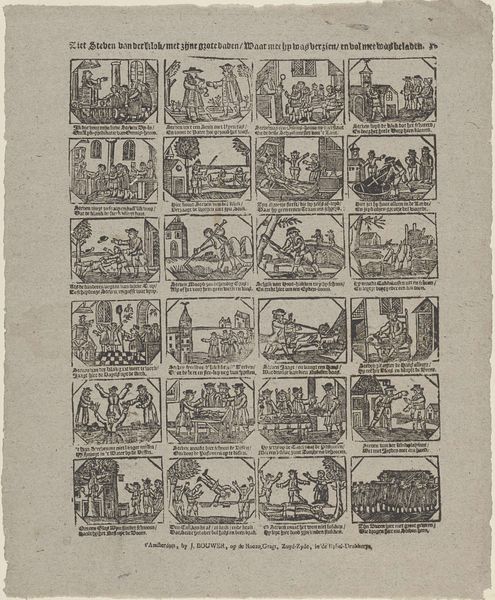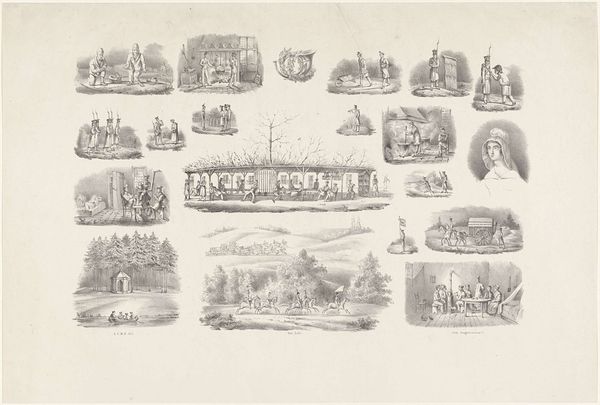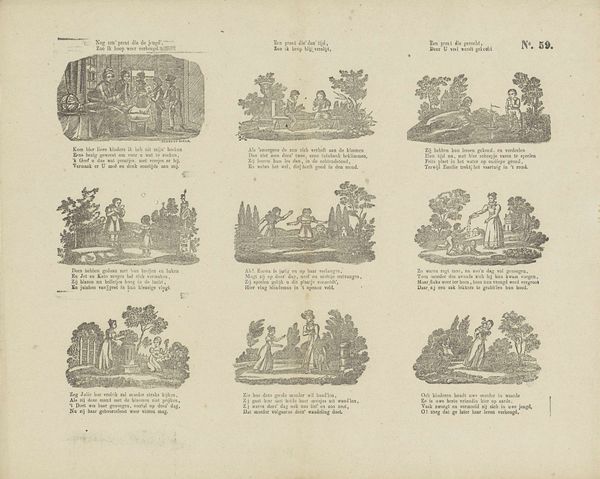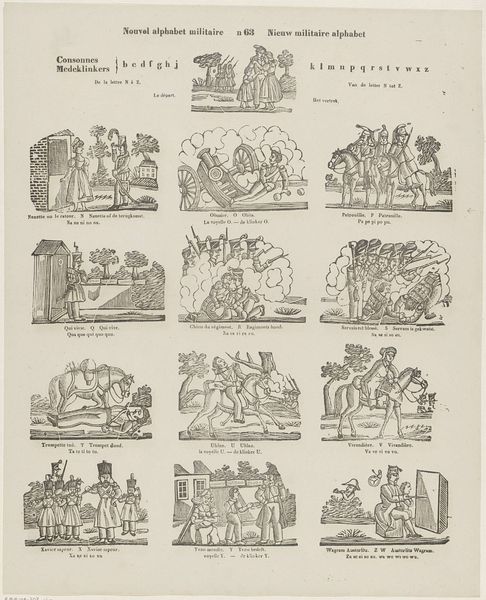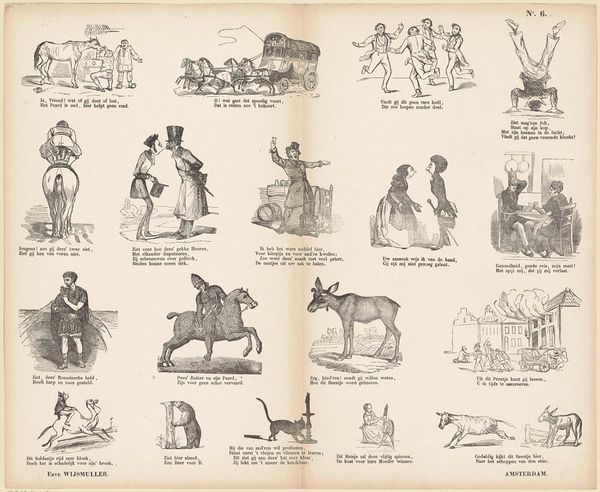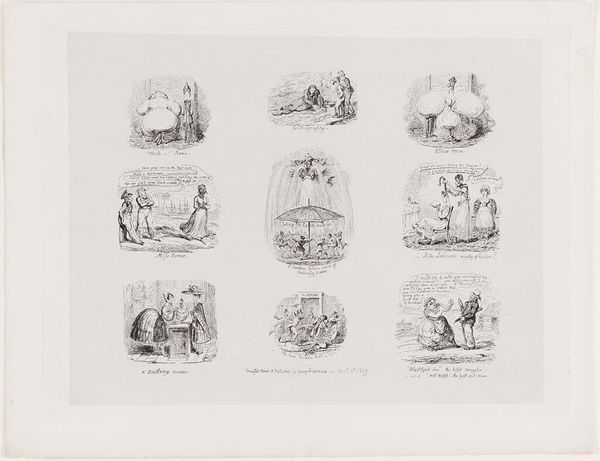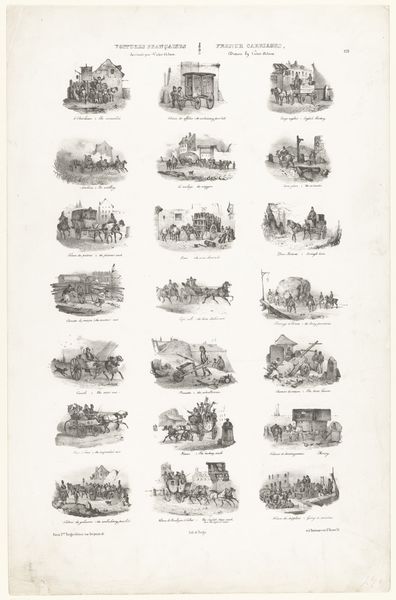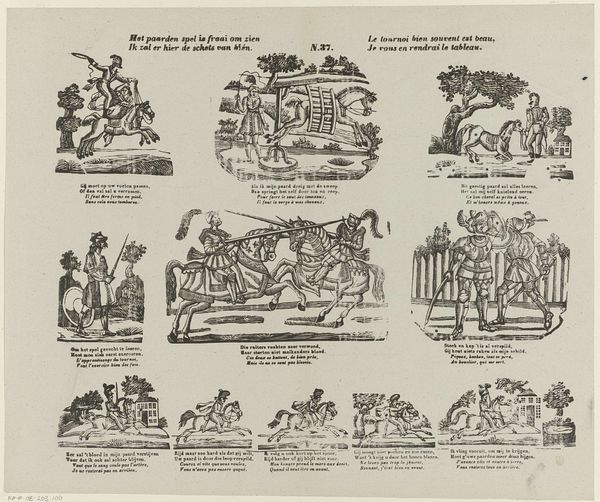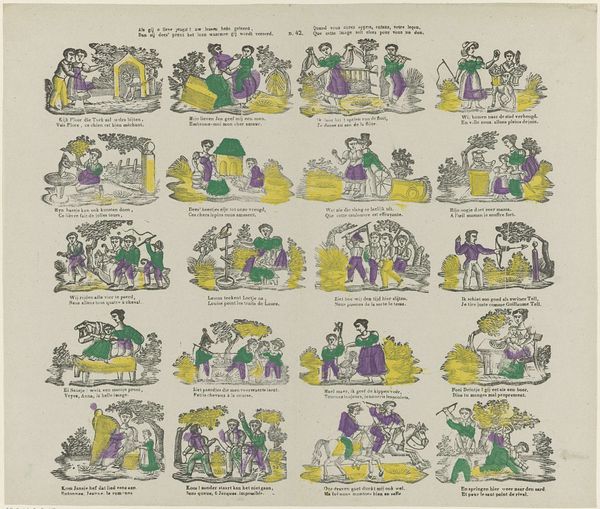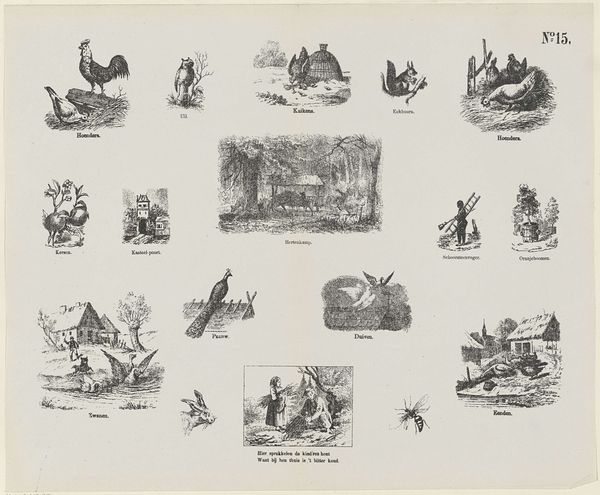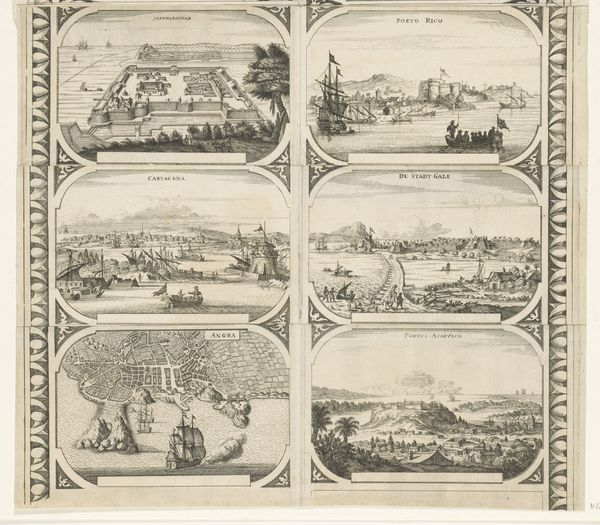
Als gij o lieve jeugd! uw lessen hebt geleerd, / Dan zij deez' prent het loon waarmee gij wordt vereerd / Quand vous aurez appris, enfans, votre leçon, / que zette image soit alors pour vous un don 1856 - 1900
0:00
0:00
Dimensions: height 333 mm, width 383 mm
Copyright: Rijks Museum: Open Domain
Curator: This engraving, titled "Als gij o lieve jeugd! uw lessen hebt geleerd…," by Glenisson & Zonen, likely dates between 1856 and 1900, presenting a series of narrative vignettes. It gives the impression of a page torn from a child's lesson book. What's your initial read? Editor: My first thought is of something almost like a primitive comic strip, maybe a sheet given out to children. The style is quite charming and innocent. Curator: Precisely! It encapsulates an era when prints were a primary means of disseminating stories and moral lessons. Each scene, though small, functions almost like a memory, a captured moment designed to instruct young minds. It seems didactic but lighthearted. Editor: The double inscription, in two languages, Dutch and French, seems telling about the society where this print circulated; probably a place with a mixed population. Curator: An astute observation! These parallel inscriptions reveal a commitment to multilingual communication, but perhaps more fundamentally, an attempt to make it accessible to as many people as possible. This makes it more widely socially effective. The scenes show different types of rewards for learned behavior. How interesting that in each one the children behave with gentle discipline and attentiveness, as we know good pupils should! Editor: The images evoke ideas of the garden as a cultural trope of this period, that suggests the relationship between children's education and growth of their characters; an analogy for intellectual nurturing as an essential process. In particular, notice the way in which, even the simplest activities like planting, have symbolic weight and offer visual continuity throughout. Curator: And isn't it fascinating to observe the way in which the arrangement and depiction of those domestic environments also contributes to forming expectations and a very ordered reality in children's mind! The visual narrative is trying to construct a very specific worldview. Editor: A valuable reminder of how prints served a very vital, if manipulative, public function! Curator: Agreed. It gives us today much food for thought about that moment's cultural beliefs.
Comments
No comments
Be the first to comment and join the conversation on the ultimate creative platform.
